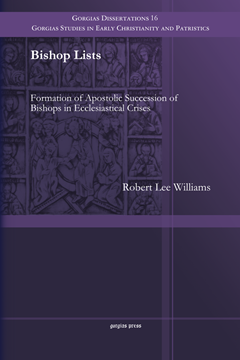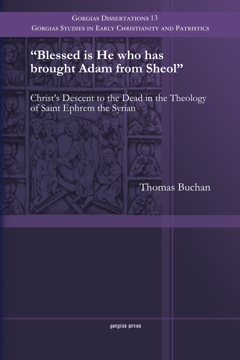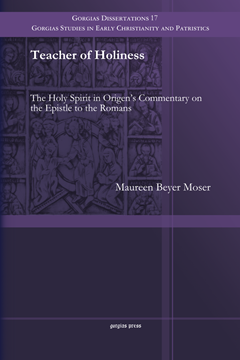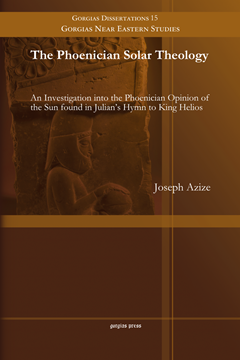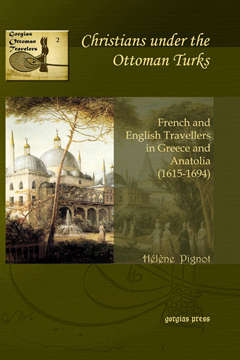The Akītu Festival (paperback)
Religious Continuity and Royal Legitimation in Mesopotamia
Series: Gorgias Near Eastern Studies 2
ISBN: 978-1-4632-0265-1
The akītu festival is one of the oldest recorded religious festivals in the world, celebrated for several millennia throughout ancient Mesopotamia. Yet, the akītu was more than just a religious ceremony; it acted as a political device to ensure the supremacy of the king, the national god, and his capital city. Using tools of social anthropology and ritual analysis, this book presents a detailed reconstruction of the festival events and its attendant rituals to demonstrate how the festival became a propagandistic tool wielded by the monarchy and ruling classes. The akītu festival demonstrates the effectiveness of religion as a political tool.
$85.00 (USD) $51.00 (USD)
Bishop Lists
Formation of Apostolic Succession of Bishops in Ecclesiastical Crises
ISBN: 978-1-4632-0266-8
Early lists of bishops, identified by Walter Bauer as "literary propaganda," mark critical points in the development of the doctrine of the apostolic succession of bishops. This study delves into the political struggles surrounding the lists and the doctrine they served to define. Ecclesiastical politics in each case reflects the threat to the bishop's authority and clarifies the meaning of apostolic succession in the Church's development. This social history approach, examining the function of the literature within its historical circumstances, reveals how theology developed from politics. The development is as gripping politically as it is illuminating theologically.
$98.00 (USD) $58.80 (USD)
"Blessed is He who has brought Adam from Sheol" (paperback)
Christ's Descent to the Dead in the Theology of Saint Ephrem the Syrian
Managing Editor Joseph Knanishu
ISBN: 978-1-4632-0267-5
Buchan’s work is an examination of the theological use of the doctrine of Christ's descent to the dead in the works of Saint Ephrem the Syrian (ca. 306-373 C.E.). Ephrem's conception of Christ's descent to Sheol provides us with an important and distinctive vision of the significance of this salvific event. Ephrem's use of Semitic and non-Western poetic forms and structures as a mode of theological discourse, coupled with his preference for imagery and symbolism rather than definition, resulted in a variety of vivid depictions of Christ's descent to Sheol. The doctrine is shown to be an integral and multifaceted component of Ephrem's theology.
$128.00 (USD) $76.80 (USD)
Teacher of Holiness
The Holy Spirit in Origen's Commentary on the Epistle to the Romans
ISBN: 978-1-4632-0268-2
This book, on the pneumatology of Origen's Commentary on the Epistle to the Romans, illustrates the centrality of the Holy Spirit for his theological project. As both God's exitus into the world and humanity's reditus to God, the Spirit forms the crucial link between Origen's doctrine of God and his spiritual anthropology. Origen's images for the Holy Spirit, understood in the context of second century concepts of 'spirit,' convey the intersection of theology and anthropology in his thought. This book explores Origen's understanding of the multiplicity of spirits found in the Scriptures, with particular emphasis on the Holy Spirit as pivotal to God's outreach into the world.
$89.00 (USD)
The Phoenician Solar Theology (Paperback)
An Investigation into the Phoenician Opinion of the Sun found in Julian's Hymn to King Helios
By Joseph Azize
Series: Gorgias Near Eastern Studies 15
ISBN: 978-1-4632-0269-9
This book, the first study of its kind, contends that an authentic Phoenician solar theology existed, reaching back to at least the fifth or sixth century BCE. Through Azize’s examination, a portrait of a vibrant Phoenician tradition of spiritual thought emerges: a native tradition not dependent upon Hellenic thought, but related to other Semitic cultures of the ancient Near East, and, of course, to Egypt. In light of this analysis, it can be seen that Phoenician religion possessed a unique organizing power in which the sun, the sun god, life, death, and humanity, were linked in a profound system.
$112.00 (USD)
Christians under the Ottoman Turks
French and English Travellers in Greece and Anatolia (1615-1694)
Series: Gorgias Ottoman Travelers 2
ISBN: 978-1-4632-0591-1
In the 17th century Britons left their country in vast numbers - explorers, diplomats, ecclesiastics, merchants, or simply “tourists.” Only the most intrepid ventured into the faraway lands of the Ottoman Empire. Their travel narratives, best-sellers in their day, provide an entertaining but also valuable testimony on the everyday life of Orthodox Christians and their coexistence with the Turks. Greek Christians, though living under the Ottoman yoke, enjoyed greater religious freedom than many of their brothers in Christian Europe. The travelers’ intellectual curiosity about Greece opened a window on the Orthodox Church, and paved the way for future dialogue.
$106.00 (USD) $63.60 (USD)

